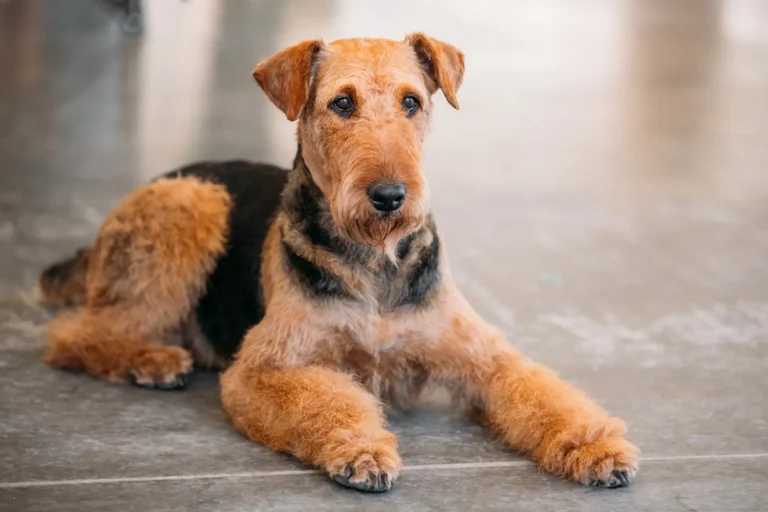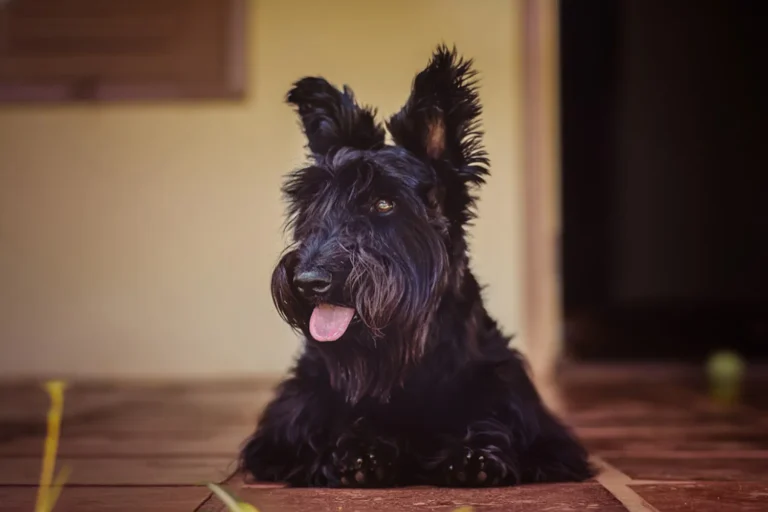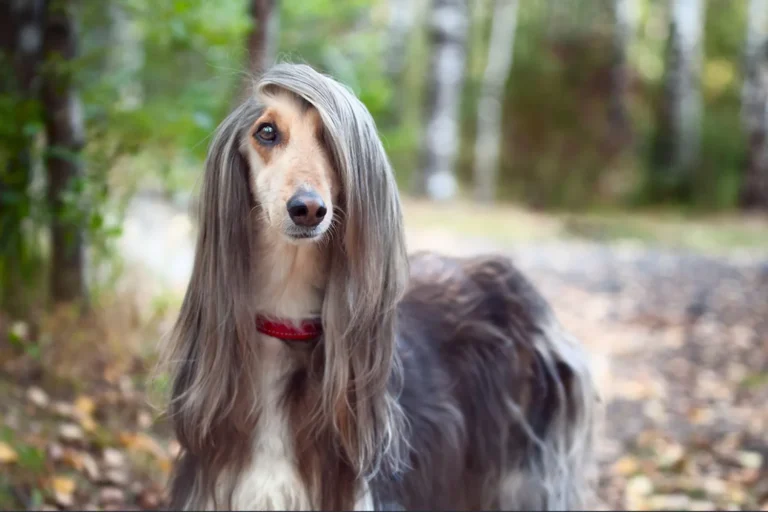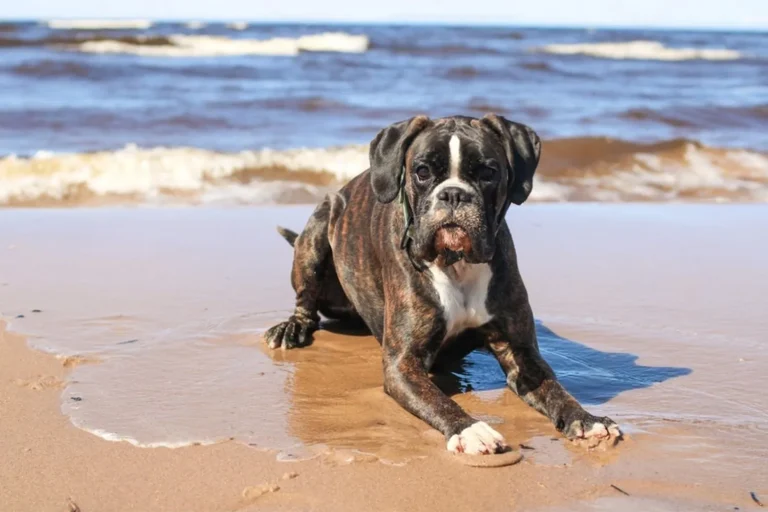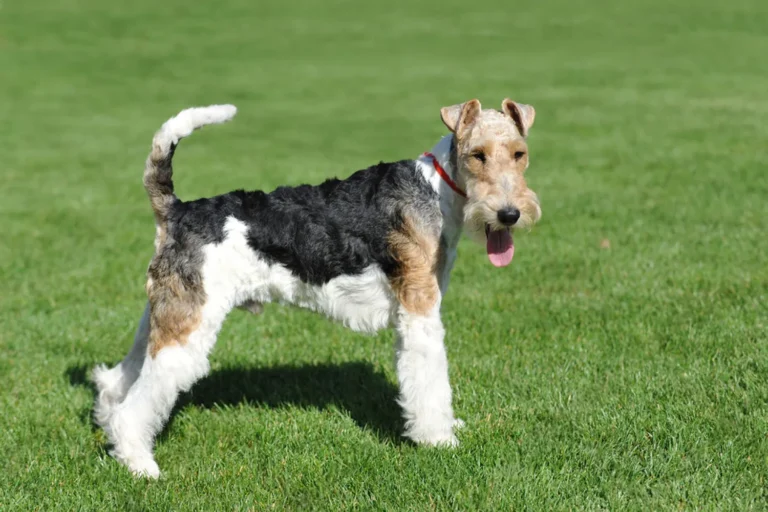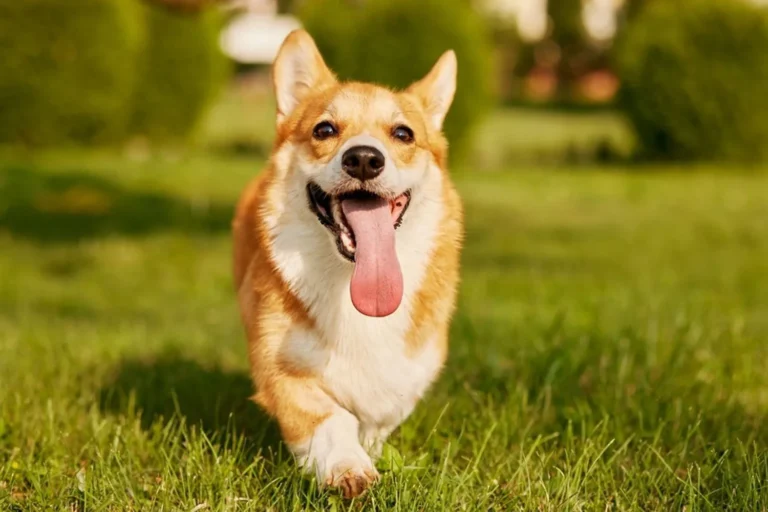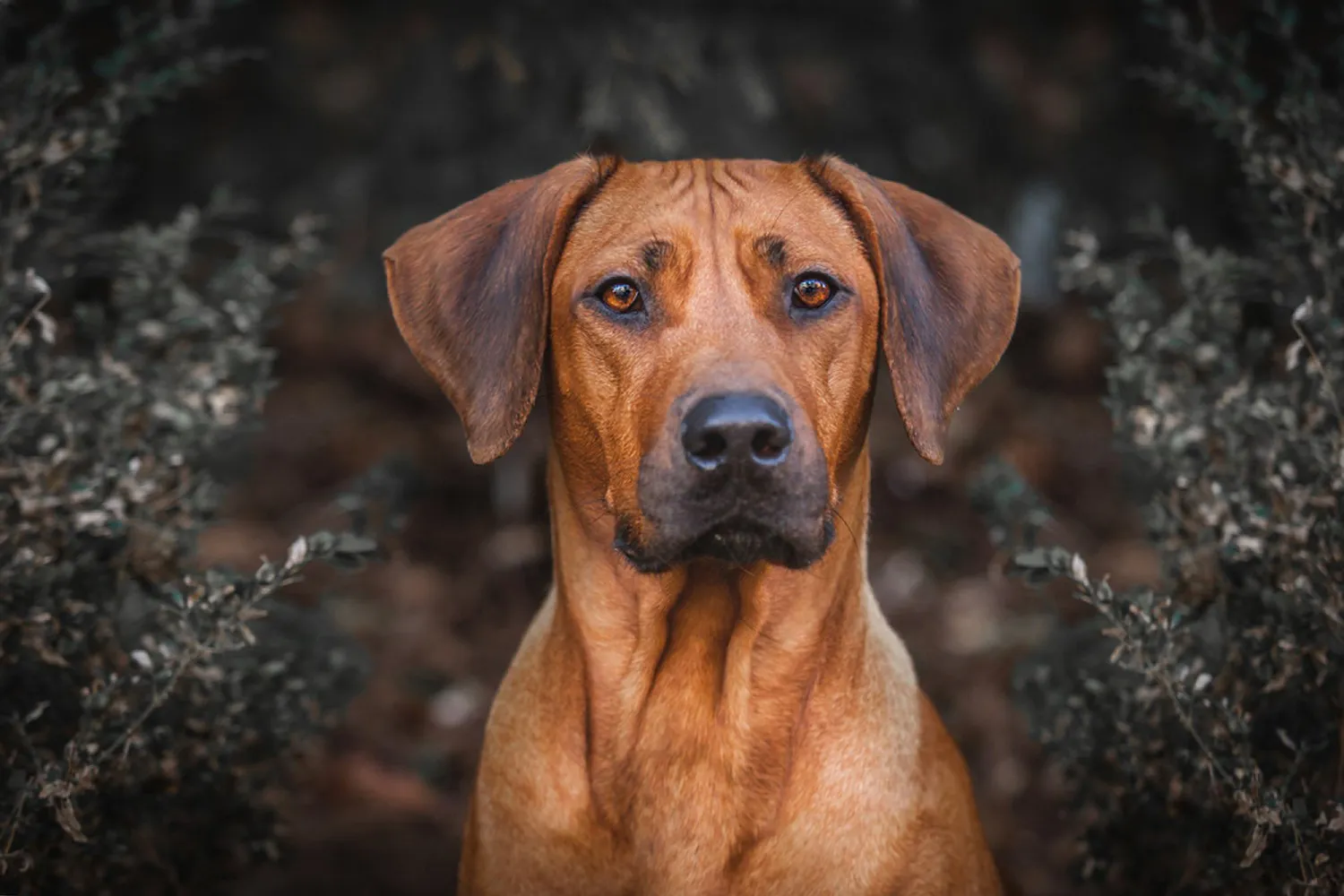
With their calm, loyal eyes and that unmistakable strip of hair running the “wrong way” down the spine, Rhodesian Ridgebacks carry themselves with a quiet strength that turns heads. They hail from Southern Africa, where they were prized as fearless hunters and steady guardians, built to cover long distances under a hot sun. The first Ridgeback I met padded alongside his owner on a dusty trail like a silent shadow, then leaned his whole weight against my leg as if to say, “We’re friends now.” That balance power and tenderness pretty much sums them up.
Today, the Ridgeback has settled beautifully into family life, trading big game pursuits for backyard zoomies and couch cuddles, but the heart of a working dog still beats under that sleek coat. Give them purpose and they shine: long walks, a few sprint sessions each week, and brain games like scent work or puzzle toys go a long way. They’re polite but can be reserved with strangers, so early socialization and confident, positive training are key. My advice? Set clear rules, invest in a sturdy leash, and don’t underestimate their athleticism mine once outpaced me on a “quick” jog I wasn’t ready for. In this article, we’ll dig into their history, characteristics, and the qualities that make this fascinating breed such a devoted companion.
History and Origin of the Rhodesian Ridgeback
They don’t call them African Lion Hounds for nothing. The Rhodesian Ridgeback earned that nickname from its historic role helping hunters pursue big game, including lions, and that famous ridge a neat line of hair growing backward down the spine is like a signature badge of the breed. The first time I met a Ridgeback, a big red male at a Saturday market, he stood so calmly amid the bustle that I understood right away: this is a dog built to keep his cool when things get wild.
The story starts in the 16th century, when European settlers moved into the interior around the Cape of Good Hope in southern Africa. There, they encountered the Khoikhoi people, who kept a resilient, semi domesticated dog with that distinctive ridge. Settlers began crossing their imported dogs think Great Danes, Terriers, Mastiffs, Greyhounds, Bulldogs, and Bloodhounds with the local ridge backed dogs. The goal wasn’t looks; it was survival and utility. From the Bloodhound came a keen nose, from the Greyhound speed, from the Mastiff and Dane size and strength, and from the Terriers a gritty determination. Through it all, the ridge remained, an enduring marker of the dog that fit the land.
Farmers across what is now Zimbabwe and South Africa needed a partner who could guard homesteads, flush game, and help in the hunt against formidable animals. Imagine cold desert nights, scorching midday heat, thorny scrub tearing at skin, long stretches without water, and a parade of ticks. Ridgebacks had to be tough, steady, and brave enough to face big game without losing their head. I once hiked with a Ridgeback named Kazi who paced himself like an ultra marathoner loping, resting, then loping again. That efficient, ground eating trot is exactly what those farmers prized. Out on hunts, Ridgebacks were known for tracking and holding dangerous animals at bay until the hunters arrived.
By 1922, breeders in Zimbabwe (then Rhodesia) formalized what made the Ridgeback a Ridgeback, setting the breed standard. The dog crossed the Atlantic in the 1950s and quickly caught attention; the American Kennel Club recognized the breed in 1955. My old neighbor still has a photo of his father with their Ridgeback from the 60s he called him “the lion dog,” and strangers would stop just to ask about that ridge.
What does all this history mean for life today? Expect a hardy, athletic companion with a thoughtful, independent streak. Give them real exercise, not just a quick lap around the block, and practice recall early centuries of following scent and sight don’t vanish overnight. A breeder I chatted with in California told me she teaches “check-ins” on every walk to channel that hunting heritage into good manners. Keep a good tick protocol, a cozy bed for chilly evenings, and a sturdy fence for that curious nose. Under the couch potato vibe is a lion hearted worker who still carries the spirit of the African bush.
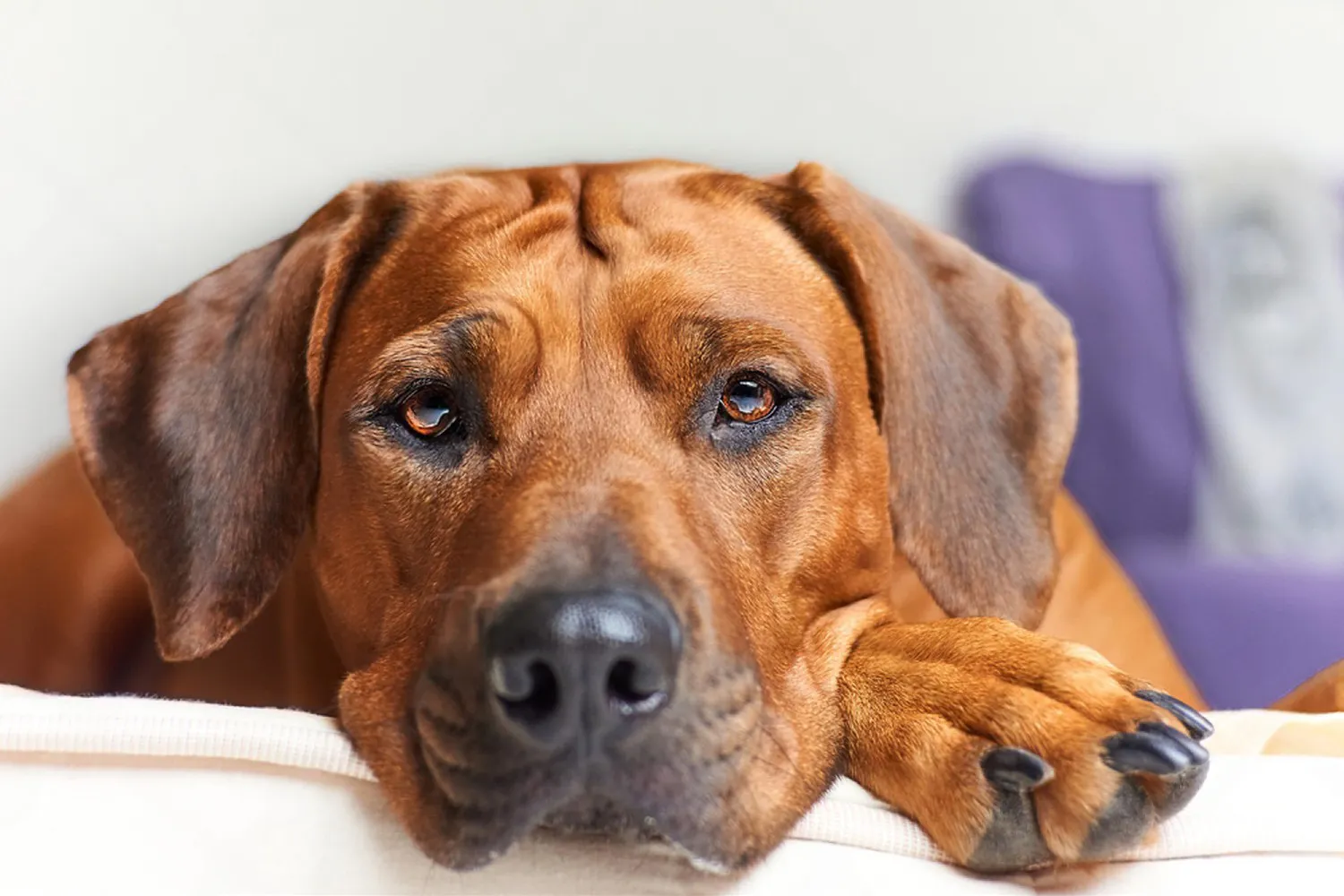
What Is a Rhodesian Ridgeback?
The first thing everyone notices about a Rhodesian Ridgeback is that famous stripe of hair running down the spine. It’s like their built in racing stripe. The ridge is actually hairs growing in the opposite direction, starting from two little crowns at the shoulders and flowing all the way to the hips. Some ridges are wide and bold, others are neat and narrow, but that ridge is the breed’s signature. And despite all the attention it gets, it’s purely cosmetic no secret superpowers hidden there, just good looks.
Their coats are short, sleek, and come in lovely shades from light wheaten to rich red wheaten, sometimes with a bit of white on the toes and chest. I love how easy they are to keep tidy quick brush, quick pat, off you go but don’t be fooled, they still shed a bit. In the sun, that wheaten coat practically glows.
Ridgebacks are members of the hound group, which means they’re athletic, strong, and built to move. Give them room to run and they will fly these dogs have serious endurance and surprising speed. I used to jog with a friend’s Ridgeback, and while I was counting down miles, he trotted along like we’d just started. If you’re active, they make incredible partners for hiking, running, or long weekend rambles. Just remember, their independent hound brain can kick in, so a secure yard and a reliable leash are your best friends.
At home, they’re devoted and affectionate with their families big hearts and a gentle side that sneaks up on you. But they can be stubborn and a bit aloof with strangers. Early, consistent training and lots of positive socialization are key. Think puppy classes, calm introductions, and plenty of rewards for good choices. One tip I swear by: practice recall with a long line in safe areas. You’ll thank yourself later. And keep their mind busy scent games, puzzle feeders, and structured play go a long way.
If you want a loyal companion who will happily curl up after an adventure but expects you to bring your A game to training, a Rhodesian Ridgeback might just be your kind of dog.
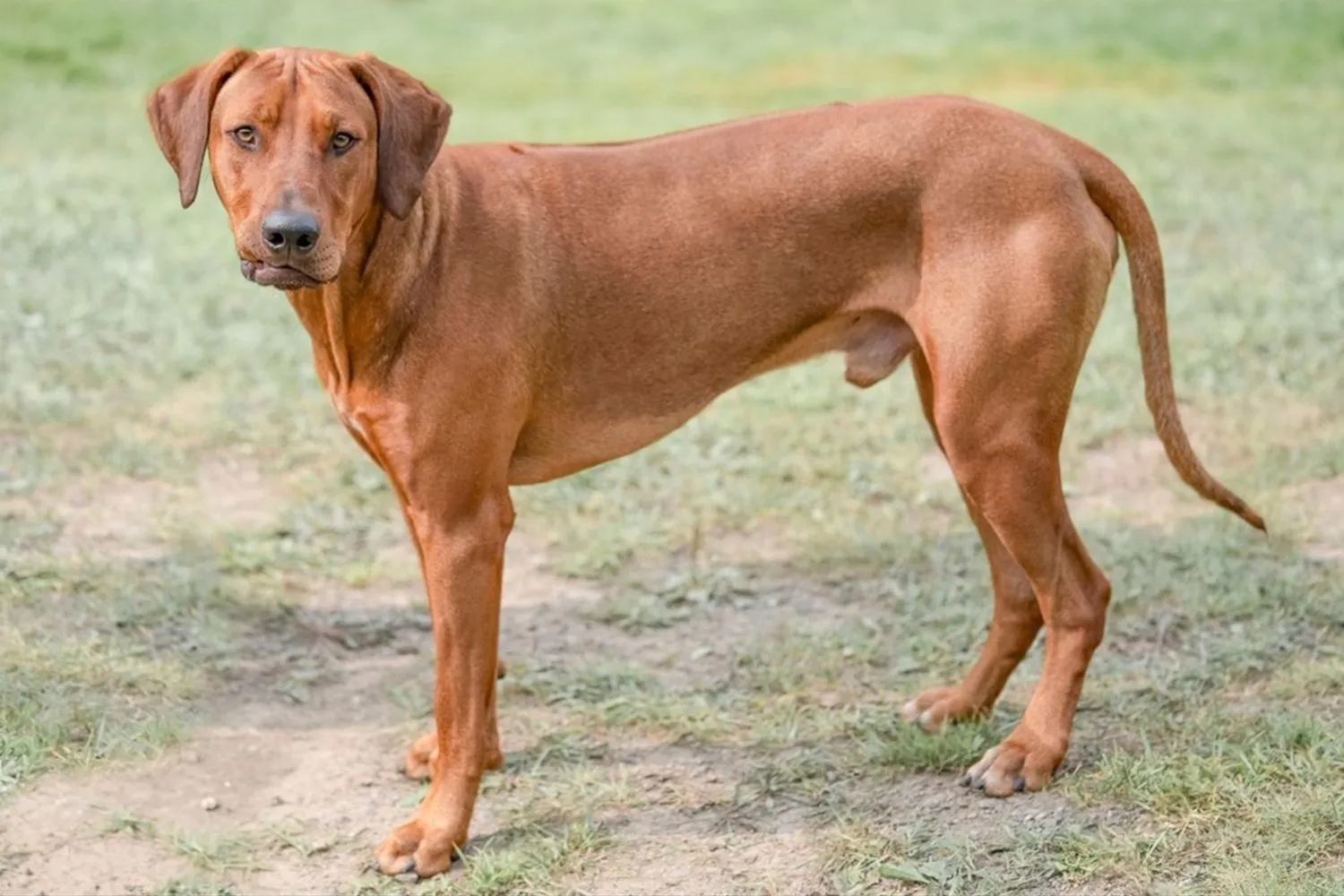
Who Is a Rhodesian Ridgeback Best For?
If you love getting outside and need a steady, athletic companion to keep pace, a Rhodesian Ridgeback might be your dream co pilot. These dogs thrive with active individuals or families who enjoy running, hiking, or long, brisk walks. I once met a Ridgeback on a trail who trotted along happily with a tiny pack on his back, carrying his collapsible bowl like it was his job. Give them consistent daily exercise and a bit of structure, and they’ll reward you by snoozing like pros at your feet afterward.
Day to day, they’re surprisingly low maintenance in the grooming department. Their short coats brush out quickly, burrs don’t cling for long, and a bath here and there is usually enough. They can adapt to multi pet households too, especially with thoughtful introductions and clear routines. A friend of mine has a Ridgeback who shares a sunny windowsill with an elderly cat there were careful meet and greets at first, and now they nap like mismatched bookends. Just remember their hunting heritage means many have a strong prey drive; a secure yard and a reliable leash are your best friends.
In the home, Ridgebacks tend to be naturally protective and make excellent watchdogs without being barky for no reason. They’re typically better suited to families with older children mostly because of their size and strength. I always tell parents: teach kids to be “dog smart.” No climbing, no ear tugging, and let the dog choose when to engage. Supervised play and clear boundaries go a long way toward a calm, respectful relationship.
That independent streak you’ve heard about? It’s real. Ridgebacks aren’t the best match for first time dog owners who aren’t ready to commit to training and exercise. They do best with someone who is calm, consistent, and uses positive reinforcement from a young age. Think solid recall, a good “leave it,” and impulse control games; food puzzles and structured walks help tire out both body and brain. One Ridgeback I used to walk would lean his whole weight against my leg after training sessions a quiet, affectionate thank you that melted me every time.
With the right environment active lifestyle, steady training, and a bit of patience Rhodesian Ridgebacks become loyal, loving companions. If you want a dignified, athletic buddy who’ll hike the hills with you in the morning and keep watch by your side at night, this breed can be a deeply rewarding fit.
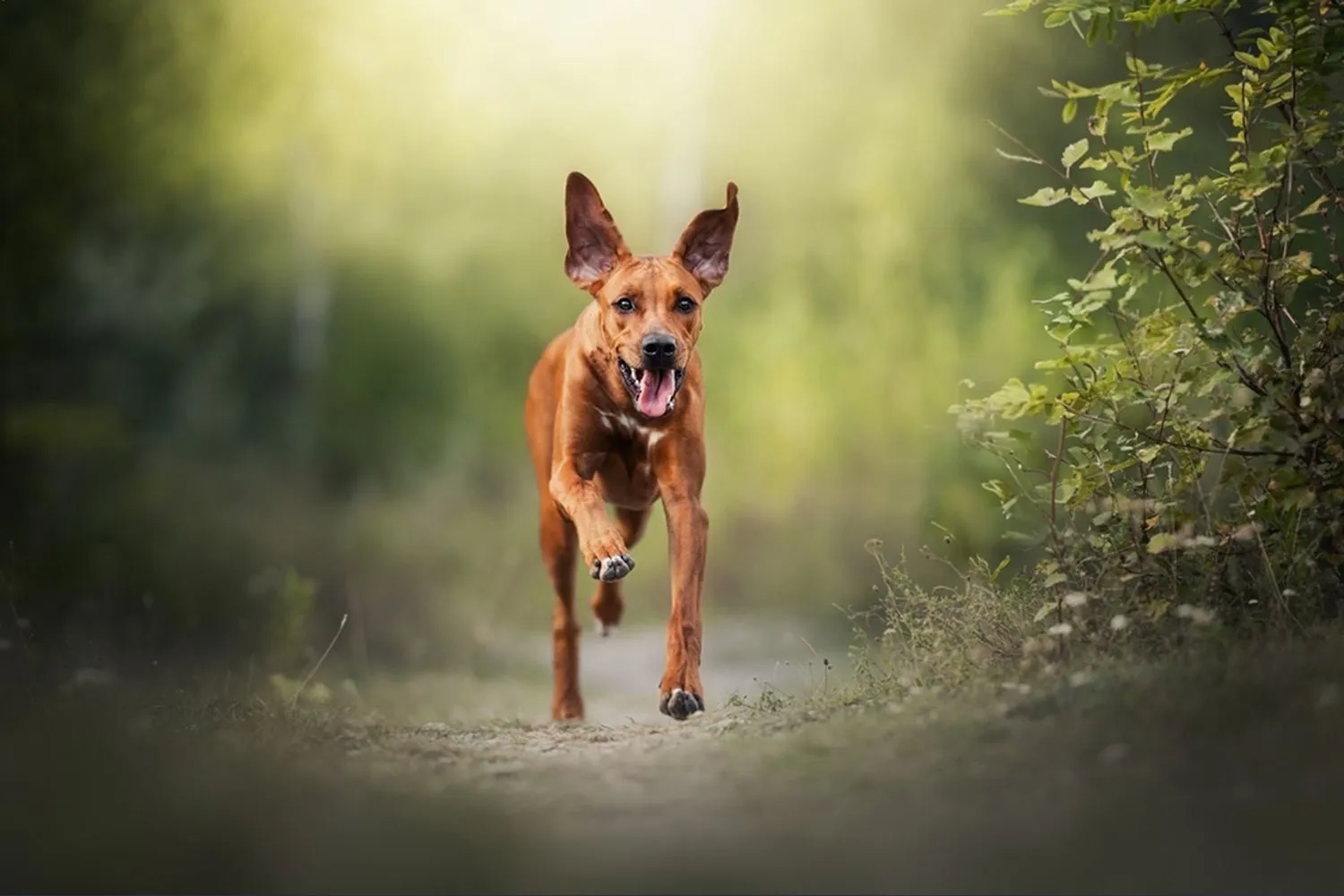
Rhodesian Ridgeback Grooming and Shedding
Grooming a Rhodesian Ridgeback is refreshingly simple, which is one of the many reasons I adore this breed. That short, dense coat is built for easy living. They do shed moderately all year long I joke that my vacuum thinks “Ridgeback season” is every season but it’s nothing a little routine can’t handle.
A quick weekly brush is usually all it takes to keep their coat looking sleek and healthy. I like a rubber grooming mitt or soft bristle brush; five to ten minutes is plenty to whisk away loose hair and spread those natural oils that give them that beautiful shine. During heavier shedding spurts (hello, spring), I do a couple of short sessions outdoors and give them a final once over with a chamois cloth to really make the coat gleam. One time at the park, I brushed my friend’s Ridgeback on a bench and watched mini “hair tumbleweeds” roll away brushing outside is my top hack.
Baths can stay occasional think when they’re muddy or every month or two, depending on your lifestyle. Use a mild dog shampoo, rinse thoroughly, and you’re done. Ridgebacks don’t carry a strong doggy odor, so you don’t need to overdo it. After dusty hikes, I often do a quick wipe down with a damp microfiber towel instead of a full bath. It’s fast, and it keeps their skin happy.
Don’t forget the nails. If you hear that click clack on the floor, it’s time. Many Ridgebacks do well with trims every two to four weeks, though road and trail time can help wear them down. I use a grinder to round the edges treats in one hand, tool in the other. I once nicked the quick on my first Ridgeback and learned to keep styptic powder nearby and take it slow. If they have dewclaws, remember to check those too.
Ears and teeth deserve regular attention. Peek at the ears weekly and clean only what you can see with a vet approved ear cleaner never go digging. I’m extra careful after swims or dusty runs. For teeth, daily brushing with canine toothpaste is ideal, but even a few times a week helps. I keep a toothbrush by the coffee maker so I never “forget” that quick 60-second scrub. Dental chews can be a nice bonus, but they don’t replace brushing.
Use grooming time as your health check: run your hands along the ridge and body to feel for bumps, hot spots, or hitchhiking burrs and ticks. Check between toes and around the armpits foxtails love those spots. A veterinarian once told me that catching a tiny skin issue early saved an owner from a full blown infection a week later. A balanced diet and omega-3s can also keep the coat soft and the skin comfortable ask your vet what’s right for your dog.
All in all, Ridgebacks are wonderfully low maintenance in the grooming department. A weekly brush, occasional bath, tidy nails, clean ears, and regular tooth care will keep them in top form. It’s a quick routine that fits easily into a busy week and it turns into a sweet little ritual they look forward to. Regular vet check ups round it out, making sure skin, nails, ears, and teeth stay healthy for the long run.
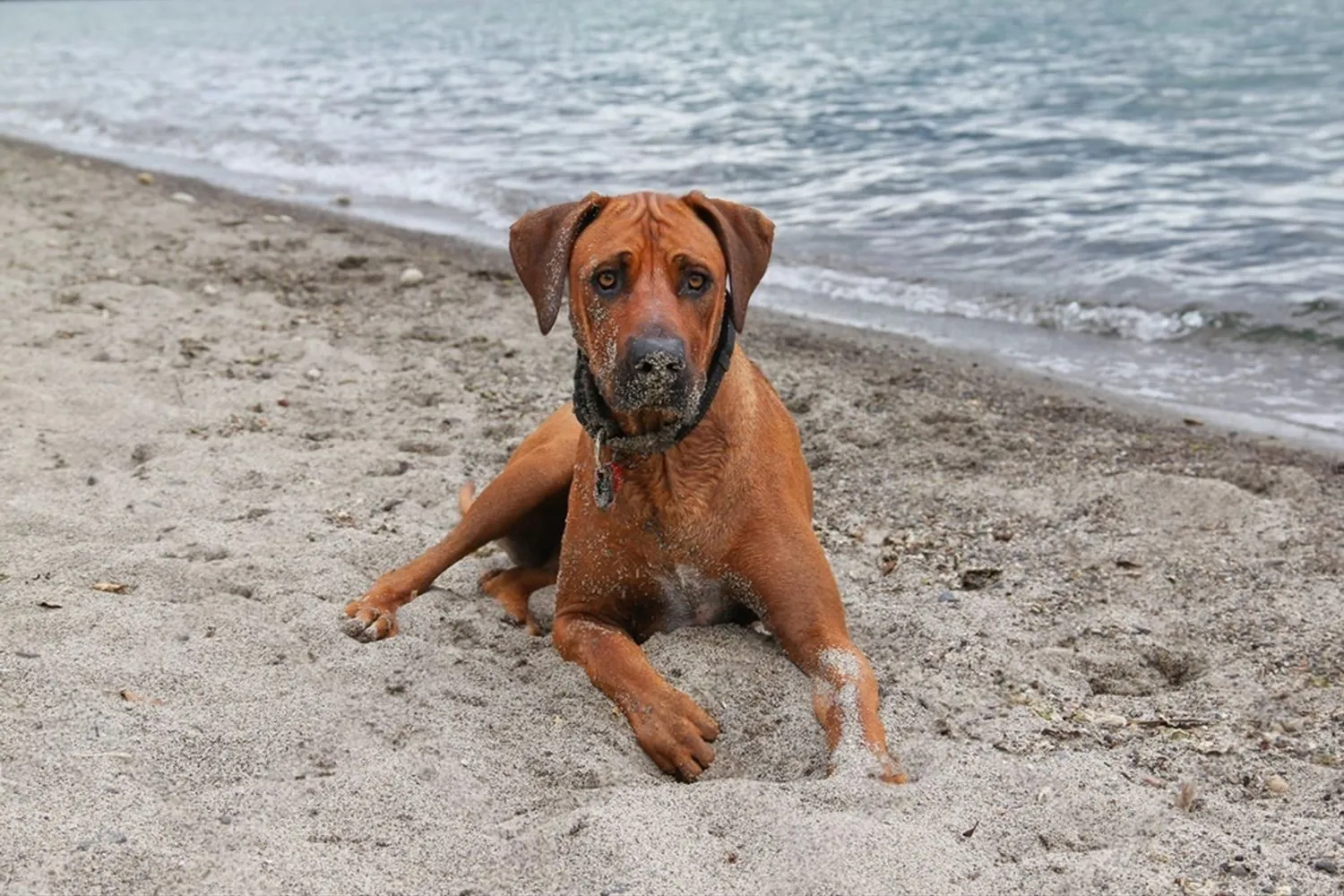
Do Rhodesian Ridgebacks Bark a Lot?
Short answer: not really. Ridgebacks are more the strong, silent type. They’re not known for yappy, constant noise. When they do speak up, it’s usually for a reason like alerting you to someone at the door or something unusual outside. My neighbor’s Ridgeback, Milo, gives exactly two deep “boofs” when a delivery truck pulls up, then flops back down once he hears “Thanks, buddy.” It’s purposeful, not incessant.
That said, these dogs are athletic and clever, and boredom can nudge them into vocalizing. If a Ridgeback isn’t getting enough exercise or mental stimulation, you might hear a few “hey, I need something to do” barks. Daily romps, brisk walks, and a good game of fetch go a long way. I like mixing in scent games, puzzle feeders, and short training sessions ten minutes of practicing cues or a new trick can take the edge off.
A little training helps too. Teach a solid “quiet” after an alert bark, and reward calm behavior at the window or door. I also set them up for success before busy times: a stuffed frozen Kong before a work call and curtains closed at dusk when squirrels turn into drama. Meet their needs, keep their brains busy, and your Ridgeback will likely stay a mostly quiet, courteous roommate.
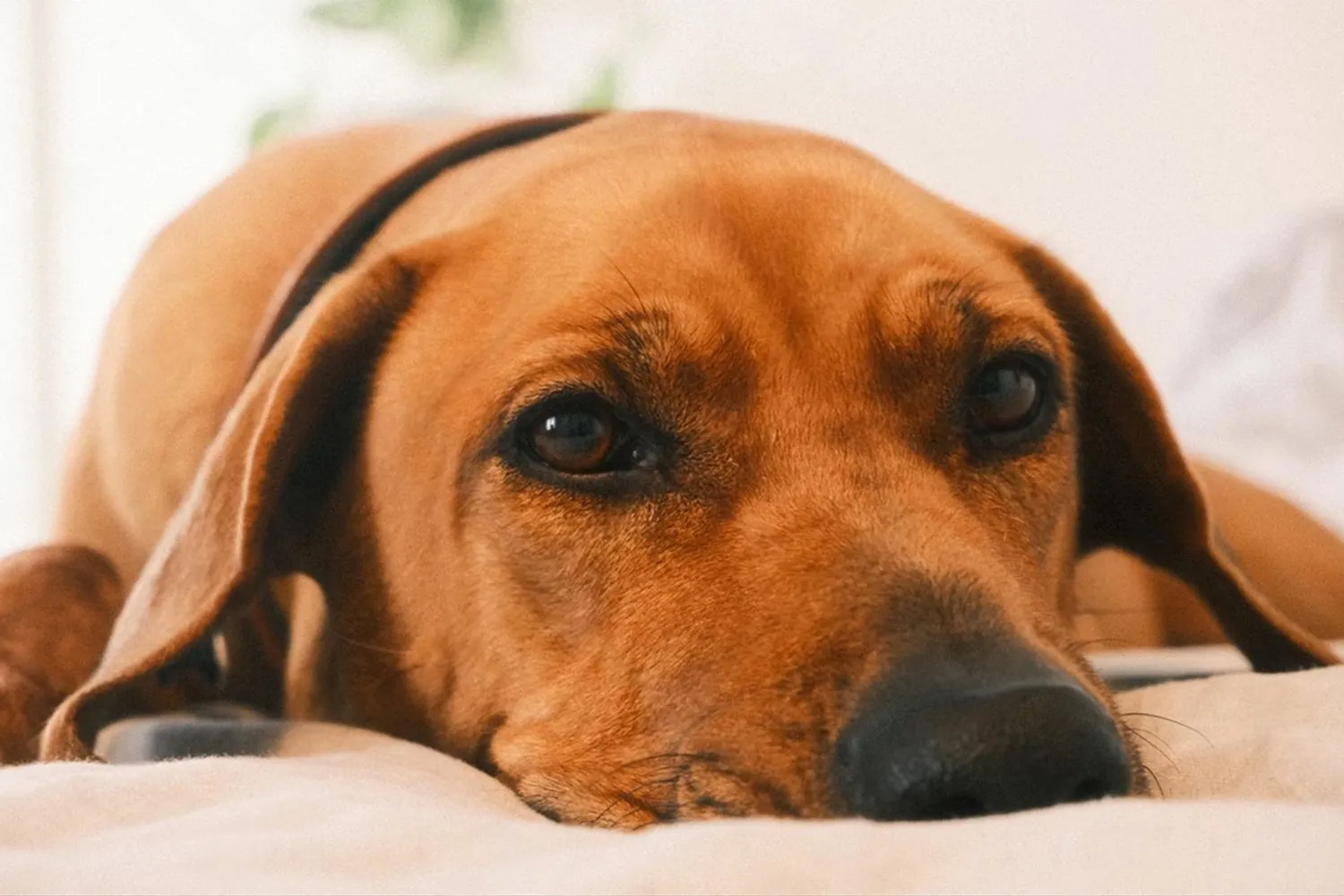
Average Weight and Height of a Rhodesian Ridgeback
Rhodesian Ridgebacks are wonderfully athletic dogs solid, lean, and built for long days on the move. If you’re trying to picture their size, most adult males stand about 63-67 cm tall at the shoulder (roughly 25-26.5 inches), while females are usually 61-66 cm (about 24-26 inches). As for weight, males typically come in around 38.5 kg (about 85 pounds), and females around 32 kg (about 70 pounds). They’re not meant to look bulky like some working breeds; a healthy Ridgeback has a defined waist and sleek muscle, the kind of dog that looks ready to hike all morning and still chase a tennis ball after lunch.
A quick measuring tip I learned after a few crooked attempts: measure height at the withers (that’s the top of the shoulders), not the head. Have your Ridgeback stand square against a wall, place a book flat across the withers, and mark the spot before you pull out the tape measure. For weight, I do the “step on the bathroom scale with and without the dog” trick when I can’t get to the vet treats help with the balancing act. I once chalk marked my hallway wall to track a friend’s Ridgeback during his lanky teenager phase; he shot up to 66 cm before finally filling out.
If your Ridgeback lands a bit above or below these averages, don’t panic build, age, and activity level matter. Focus on body condition: you should be able to feel the ribs with a light touch, see a gentle tummy tuck from the side, and a waist from above. Ridgebacks often hit their adult height first and fill out with muscle over time, so don’t rush their weight with extra food. Consistent exercise and good quality nutrition do more for their health than chasing a number. And if you’re unsure whether your dog’s size is on track, a quick chat with your vet can give you peace of mind.
https://en.wikipedia.org/wiki/Rhodesian_Ridgeback
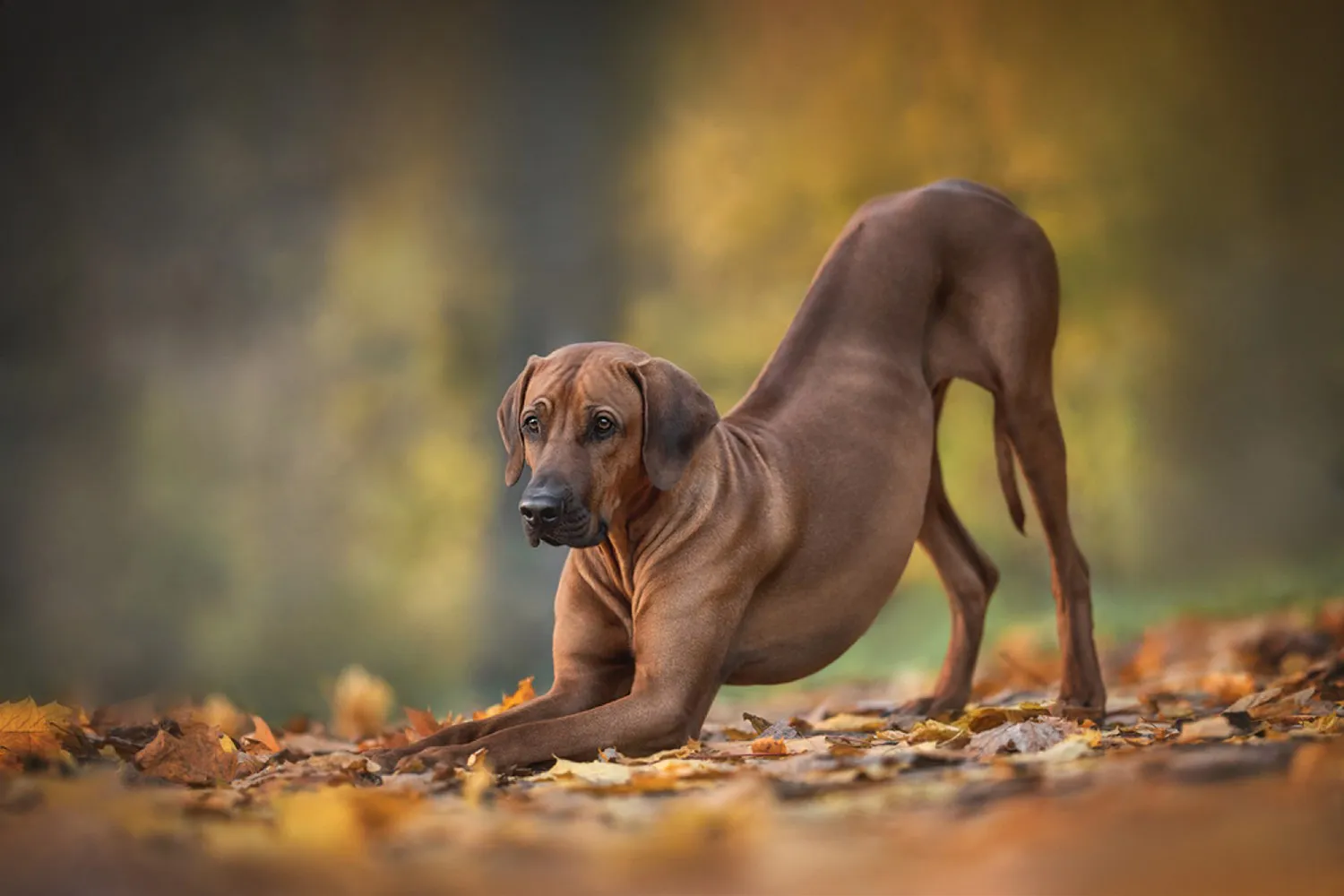
Are Rhodesian Ridgebacks easy to train?
Short answer: they’re smart as a whip, but they like to do things on their own terms. Ridgebacks are highly intelligent, independent, and strong willed, which means training isn’t usually a breezy, do it once and done kind of deal. I remember the first Ridgeback I met in a beginner class he learned “sit” in two minutes flat, then promptly decided he’d only do it if you made it worth his while. That’s the breed in a nutshell: capable, but not easily impressed.
Consistency and positive reinforcement are your best tools. Keep sessions short, upbeat, and clear. High value treats, a favorite tug toy, or a quick sniff break can go a long way with a Ridgeback. I like to start with rock-solid basics sit, down, stay, leave it, and a reliable recall on a long line then sprinkle in impulse control games like “wait at the door” and “settle on a mat.” They respond especially well when you make training feel like a partnership. Harsh corrections just make them dig in their heels.
Start early if you can. A sweet, lanky puppy grows into a powerful adult, and it’s no fun trying to teach polite leash manners when you’re getting towed down the street. Puppy classes are fantastic for building the fundamentals and giving your Ridgeback safe, guided time around other dogs and people. Socialization is extra important for this loyal breed, which can be wary of strangers. My go to routine is calm, positive introductions to new places, sounds, and friendly folks, paired with lots of rewards for checking in with me. No overwhelming crowds at first slow and steady builds confidence.
With patience and practice, Ridgebacks can absolutely shine. Many excel in sports like lure coursing, tracking, agility, and scent work anything that taps into their brains and their athleticism. A bit of exercise before training helps them focus, and mixing in mental work (like nose games or puzzle toys) keeps boredom at bay. Stick with it, stay fair and consistent, and you’ll have a well mannered companion who chooses to listen because you’ve built trust plus a teammate who’s a blast to work with.
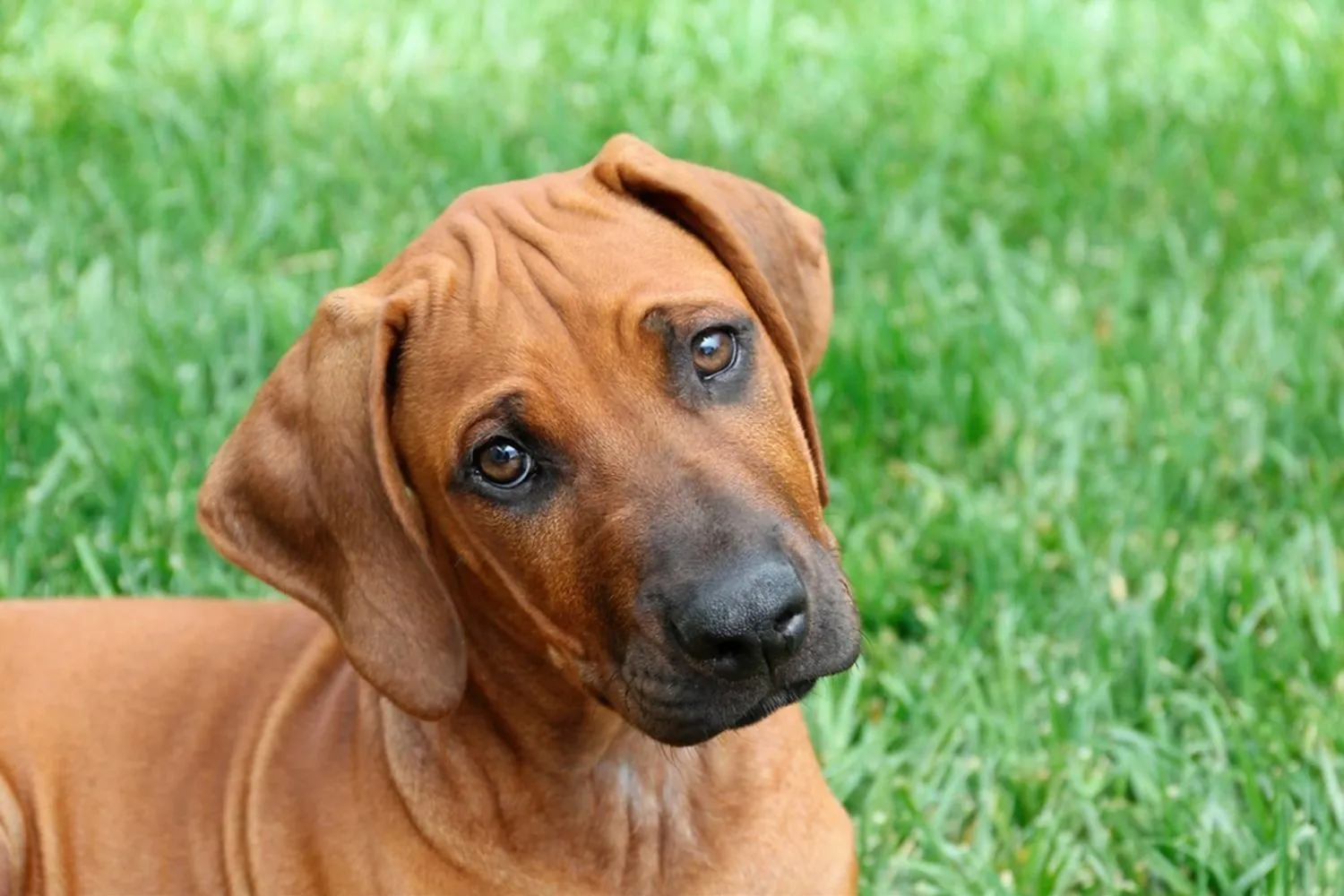
How Do Rhodesian Ridgebacks Behave? A Look at Their Temperament and Personality
If you’ve ever met a Rhodesian Ridgeback, you’ll notice that steady, unflappable calm right away. They’re tougher than many other hounds, but not noisy about it more strong, silent type than chatterbox. They don’t bark just to hear themselves; when they do speak up, there’s usually a reason. Around their people, they’re surprisingly soft and affectionate. I once dogsat a Ridgeback named Zuri who would spend mornings shadowing me from room to room and then curl up like a cat at my feet during calls.
Those classic Ridgeback traits protective, loyal, brave, independent come from their hunting history, and they translate into excellent watchdogs. Not jumpy, just quietly alert. My friend’s Ridgeback has a habit of stepping between her and a stranger without any drama, then relaxing the moment he decides all is well. They can be a bit aloof with new folks, but with family, they’re all heart.
That independent streak can feel like stubbornness to first time owners, so set clear rules and keep training short, upbeat, and consistent. Make it worth their while mix food rewards with play and a little freedom to sniff. Early socialization, impulse control games, and a reliable recall on a long line are gold, especially given their chase instinct. A breeder I spoke with in California told me, “They respect fairness more than volume,” and that’s been my experience too. With calm leadership and daily exercise, a Ridgeback becomes a remarkably loyal, gentle companion who watches your back without making a fuss.
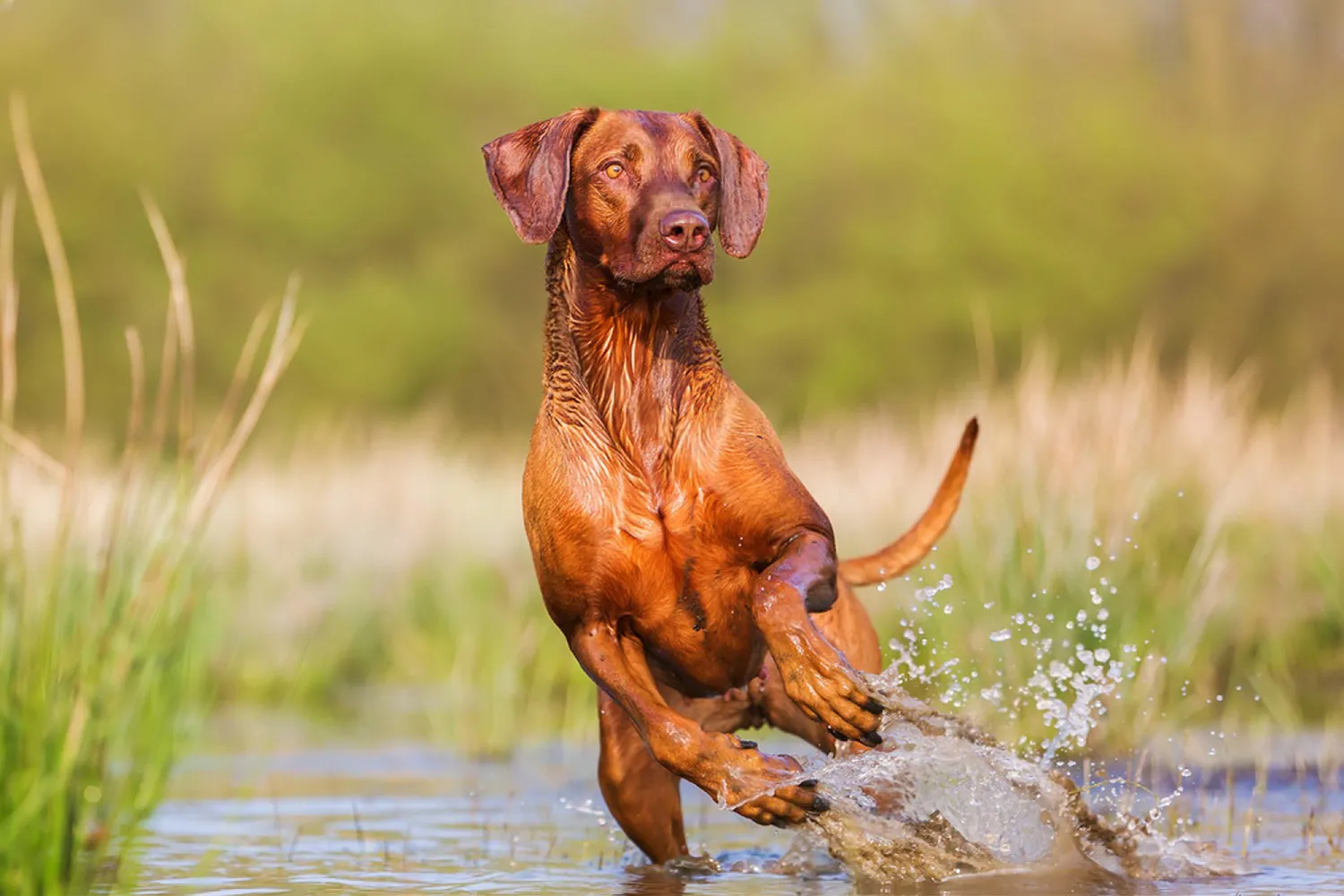
Do Rhodesian Ridgebacks Have Common Health Issues?
Rhodesian Ridgebacks are generally sturdy, athletic dogs, but like any large breed, they have a few health quirks worth knowing about. I always say a little knowledge saves a lot of worry later. When I brought home my first Ridgeback, I made a checklist for vet visits and breeder questions nothing dramatic, just a simple plan so I could enjoy the goofy zoomies without second guessing every limp or scratch.
Here are the big ones to keep on your radar, and a bit of real life advice for each:
– Hip dysplasia: This is a hereditary issue where the hip joint doesn’t fit together quite right, which can lead to arthritis and discomfort. Keeping your Ridgeback lean and building strong muscles with low impact exercise makes a world of difference. I learned quickly that long, steady walks and controlled hill work beat endless ball chasing on hard ground. If you’re getting a puppy, ask the breeder for hip certifications (like OFA or PennHIP). For adults, watch for stiffness after naps or reluctance to jump into the car.
– Elbow dysplasia: Similar idea, different joint. You might notice front leg lameness, bunny hopping, or stiffness after hard play. My big guy hated slippery floors adding runners in the hallway cut down on his slips and the next day soreness. Your vet may recommend X rays, joint supplements, or specific exercises. Avoid repetitive jumping while they’re growing; those growth plates need time to set.
– Thyroid issues (hypothyroidism): This one shows up more often in Ridgebacks than many folks realize. Signs can be subtle: low energy, weight gain despite normal portions, flaky skin, or a thinning coat. A friend’s Ridgeback, Kira, went from couch potato to playful again after a simple diagnosis and daily thyroid medication. It’s very manageable once identified ask your vet about a thyroid panel if something feels “off” for more than a couple of weeks.
– Dermoid sinus: Unique to certain breeds, including Ridgebacks, this is a congenital defect along the midline of the back that can lead to infection. Good breeders check for it in puppies, and surgical removal often fixes the issue if it’s present. When I fostered a Ridgeback pup, the vet showed me how to run my fingers gently along the ridge to feel for any tiny dimples or cords under the skin easy, quick, and great peace of mind.
A few practical tips from the trenches: keep them lean (you should feel ribs without pressing hard), build strength with consistent, moderate exercise, and schedule regular vet checkups to catch changes early. Ask breeders for health test results on hips, elbows, and thyroid, and don’t be shy about following up with questions. Most importantly, don’t panic many Ridgebacks breeze through life with minimal issues. A little proactive care goes a long way toward keeping that beautiful ridge wagging for years.
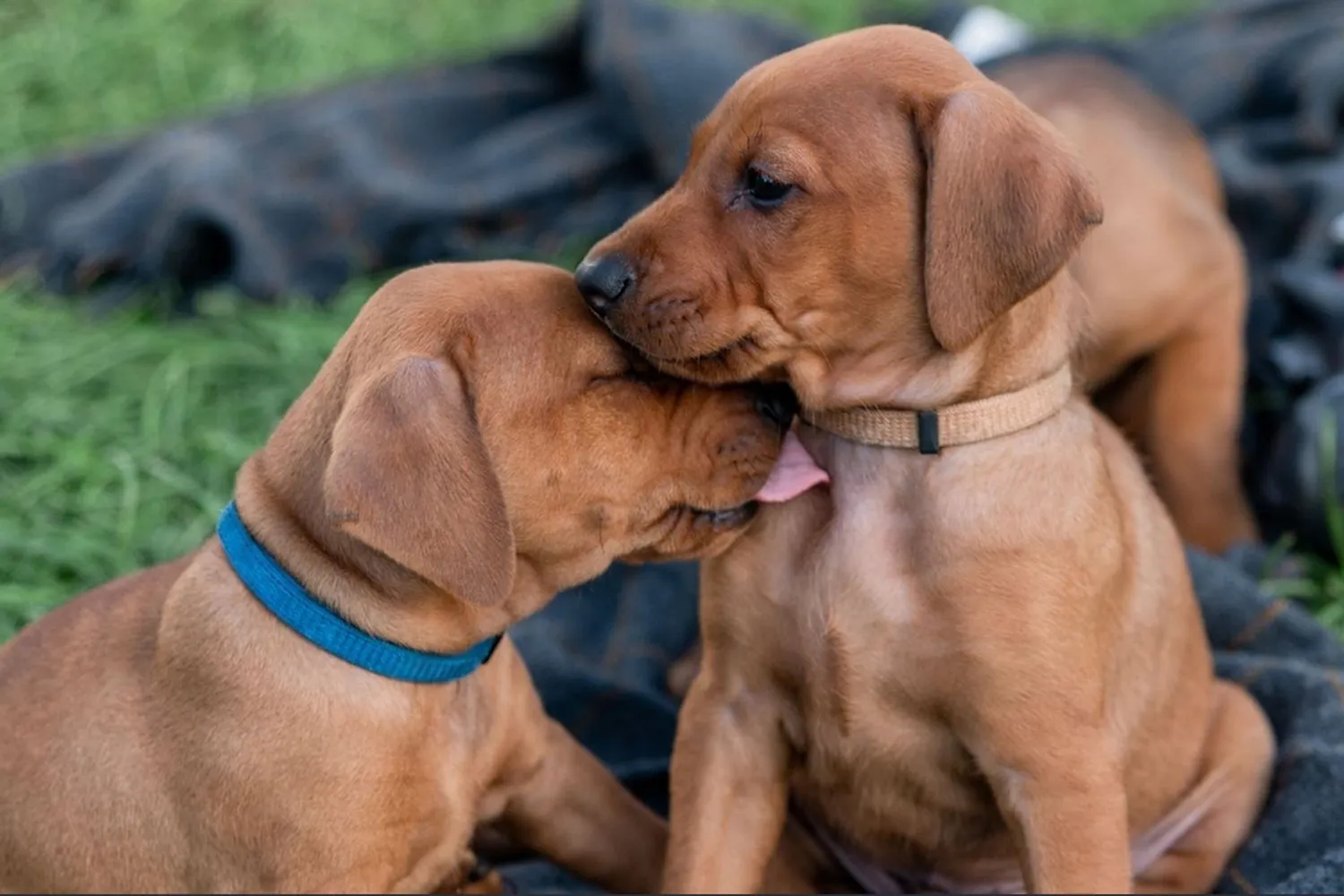
What Is the Lifespan of a Rhodesian Ridgeback?
Most Ridgebacks I’ve known happily amble alongside their families for 12 to 15 years, which is impressive for a large, athletic dog. My neighbor’s old boy, Kudu, was still trotting up the trail at 13, taking breaks to sunbathe like a king on any warm patch of dirt he could find. That’s the sweet spot for this breed: long enough to collect a decade and a half of memories, yet active enough that you’ll forget they’re “senior” until one day they decide the couch is the best place to supervise the household.
If you want your Ridgeback to make the most of those years, think consistency. Keep them lean extra pounds are tough on big dog joints. Aim for daily exercise that’s steady rather than extreme; long walks, easy jogs, and sniffy adventures beat weekend warrior sprints. I started joint friendly routines early with mine: good traction on floors, an orthopedic bed, and regular nail trims. Routine vet checkups, a balanced diet, and a little dental care go a long way, too. And don’t forget the brain games puzzle feeders and scent work kept my friend’s Ridgeback sharp and content well into his teens.
As they get older, you’ll notice subtle shifts: a slower morning stretch, a deeper love of naps, or a preference for shorter, more frequent outings. Lean into it. Swap the high jumps for gentle hills, add a ramp to the car, and enjoy the quieter moments. With that kind of thoughtful care, many Ridgebacks thrive right through that 12-to-15-year window and some keep surprising you with a few extra birthdays.
How Much Should a Rhodesian Ridgeback Eat?
Short answer: it depends. Longer answer: team up with your veterinarian or a canine nutritionist, because these athletic powerhouses need enough fuel to keep muscle on without overloading growing bones and joints. Ridgebacks are big, strong dogs, and the goal is steady, sensible nourishment rather than stuffing the tank.
When you’re choosing food, look for the WSAVA and AAFCO seals so you know it’s complete and balanced. If you’ve got a youngster, stick with a large breed puppy formula those are designed to support controlled growth. I know the trendy stuff can be tempting, but skip boutique diets like raw or grain free; grain free in particular has been linked to dilated cardiomyopathy in some dogs. Flashy marketing isn’t worth the risk.
Most adult Ridgebacks do well on two meals a day. Some owners split the daily portion into smaller, more frequent meals especially helpful for gulpers and for managing bloat risk. I feed my Ridgeback breakfast and dinner, and on super active days I’ll divide the same total amount into three smaller servings. Start with the feeding chart on your food bag as a baseline, then adjust for your dog’s size, body condition, and activity level. I like using a kitchen scale instead of scoops less guessing, fewer love handles. You should be able to feel ribs without pressing and see a nice waist when viewed from above.
Treats are great for training, just keep them moderate and account for them in the day’s calories. I often use part of the meal kibble as rewards. Skip table scraps; it’s not just about tummy troubles, it also teaches Olympic level begging I learned that the hard way at a summer barbecue. Fresh water should always be available; I keep a collapsible bowl in my hiking pack.
Because Ridgebacks are deep chested, bloat (GDV) is a concern. Smaller, slower meals can help. A slow feeder bowl or puzzle feeder worked wonders for my eager eater. Avoid vigorous exercise right before and after meals, and discuss other prevention strategies with your vet. And if you ever switch foods, transition gradually over a week or so once I rushed it and spent a night regretting that choice right alongside my dog.
With a smart plan, a good food, and a bit of portion mindfulness, your Ridgeback will thrive.
Rhodesian Ridgeback FAQs
Is a Rhodesian Ridgeback ideal for a first time dog owner?
They may look like calm, quiet hounds, but don’t let those soulful eyes fool you. Ridgebacks are strong, smart, and wonderfully loyal and they know their own minds. That protective instinct and stubborn streak can be a handful if you’re new to training. They do best with consistent boundaries, lots of socialization from day one, and an owner who isn’t shy about sticking with a plan. I remember meeting a nine month old Ridgeback named Zuri who could pull like a freight train; after a few months of structured training and impulse control games, she turned into an absolute dream on leash. If you’re a first time owner who’s extremely confident, willing to work with a good trainer, and ready to make socialization and obedience a daily habit, you can make it work. Otherwise, they truly thrive with experienced owners who understand how to channel that big brain energy. Put in the effort, and you’ll have a devoted, affectionate shadow who’s happiest right by your side.
Do Rhodesian Ridgebacks suffer from separation anxiety?
Some do. While they have an independent streak, the breed’s history is all about working alongside people, and many don’t love long stretches alone. I’ve seen both ends of the spectrum: my friend’s Ridgeback does fine with a midday walk and a stack of puzzle toys, while another I dog sat once gnawed a doorframe after being left too long, too soon. Preventing issues starts early practice short comings and goings, reward calm behavior, and build up alone time gradually. A comfy den or crate, food stuffed chews, and a white noise machine can help, as can dog walkers or daycare on busy days. If you’re away a lot, plan for support before you bring a Ridgeback home.
Are Rhodesian Ridgebacks hypoallergenic dogs?
Nope. They wear short coats, but they shed year round and produce dander that can trigger allergies. If allergies are a concern, spend time with an adult Ridgeback before committing I had a family visit for a few afternoons in a row to see how they reacted, which saved a lot of heartache. Keeping up with cleaning helps: a vacuum with a HEPA filter, washable couch covers, an air purifier, and quick outdoor brushing sessions can make a real difference, though it won’t make the breed hypoallergenic.
Will a Rhodesian Ridgeback need professional grooming?
They’re refreshingly low maintenance. Most Ridgebacks don’t need a professional groomer unless you prefer the convenience. At home, a weekly once over with a rubber curry brush or grooming mitt keeps the coat shiny and the tumbleweeds under control bump that up during seasonal shedding. Bathe as needed; mine gets a rinse after muddy hikes and a proper shampoo every month or two. Don’t forget basics: nail trims (black nails can be tricky, so I had a groomer handle them at first), ear checks after romps, and regular tooth brushing. I keep a mitt by the front door so I can give a quick rubdown after walks; it’s become our little ritual, and my couch thanks me.
Bottom line: Ridgebacks are incredible companions for the right person steady, loving, and brave. If you’re ready to invest in training, socialization, and a routine that keeps their mind busy, you’ll be rewarded with a family member who gives you their whole heart.
Disclaimer:
This article is for informational purposes only and doesn’t replace professional veterinary or training advice. Always consult a certified vet or dog trainer for guidance specific to your pup.
